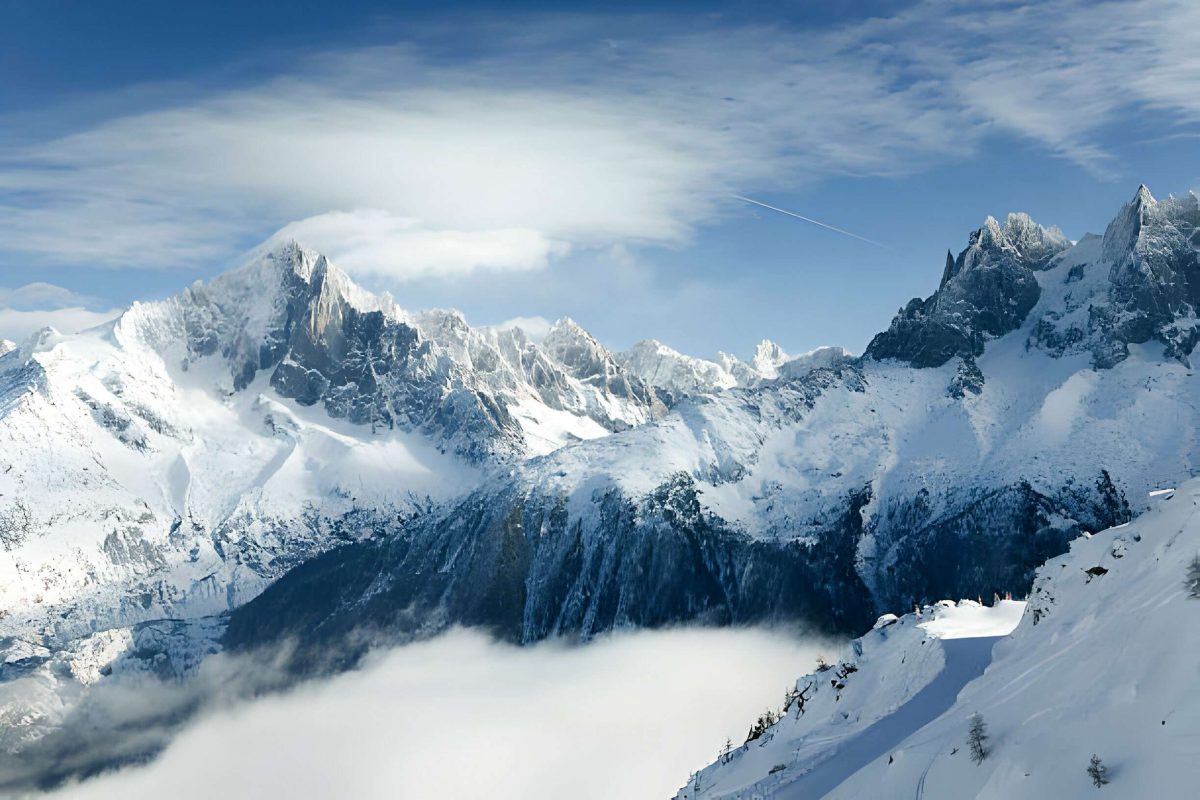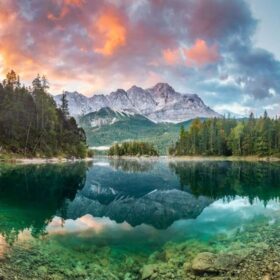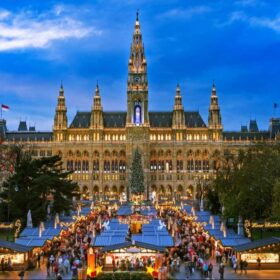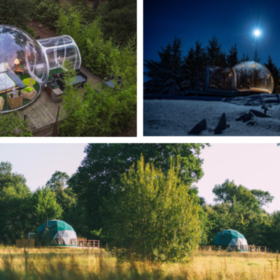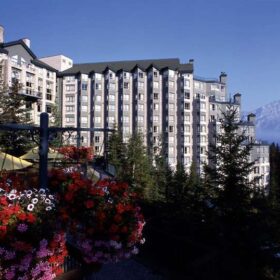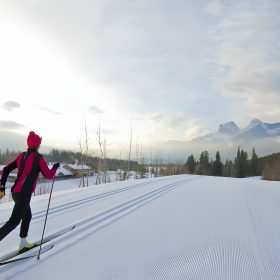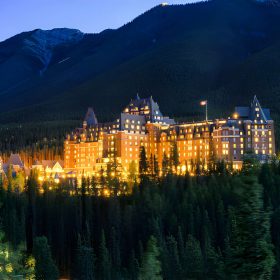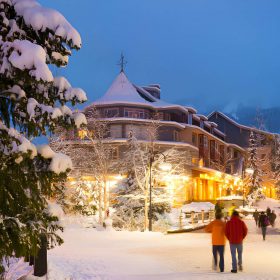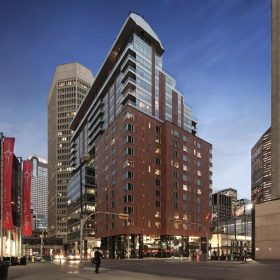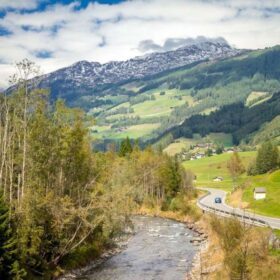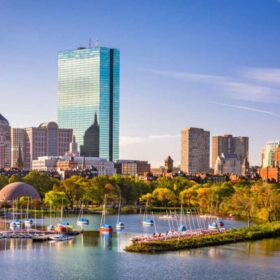Evolving from its origins as a pursuit for daring mountaineers, skiing has transformed into a widely embraced winter activity suitable for the entire family. Ski resorts worldwide have adapted to this demand, incorporating hotels, restaurants, après-ski entertainment, and an array of indoor and outdoor recreational facilities. However, for skiing enthusiasts, the paramount factor remains the quality of snow and the characteristics of the mountainous terrain on which it descends.
While Europe and North America house the most renowned ski resorts, the 1998 Winter Olympics thrust Japan into the skiing spotlight, and the pursuit of year-round snow has brought increased attention to the Andes.
Selecting the best ski resort for vacation involves numerous considerations, but this list prioritizes the skiing experience itself—emphasizing the diversity and challenge of the terrain, snow conditions, and lift accessibility. It focuses on top choices that belong on the bucket list of any avid skier.
Note: Many of these mountains feature backcountry terrain that, due to its inherent unpredictability, should only be ventured into with a qualified and well-equipped backcountry guide.
Discover the finest skiing destinations with our compilation of the best ski resorts in the world.
1. Whistler Blackcomb, Canada
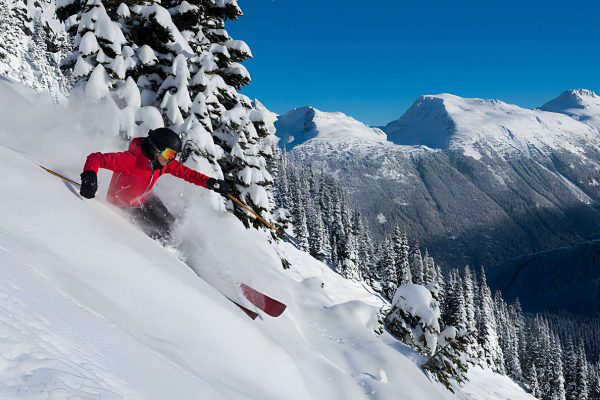
Now a part of the Vail Resorts group, Whistler Blackcomb seamlessly integrates the exceptional terrain of two mountains, solidifying its status as Canada’s premier ski resort and the largest winter sports area in North America. The combined skiable terrain boasts over 200 runs, accessible via 37 lifts. Among these, the three-kilometer-plus PEAK 2 PEAK gondola stands out as the world’s longest unsupported lift span, connecting the two mountaintops.
Renowned for its top-notch technical facilities and diverse terrain, including wide-open bowls on Whistler Mountain and the year-round skiing possibilities on the Horstman Glacier on Blackcomb, Whistler remains a preferred destination for avid skiers. The resort’s commitment to world-class grooming further enhances its appeal.
Whistler Blackcomb is equally popular among freestyle skiers and snowboarders, offering five distinct parks spanning 99 acres to accommodate various freestyle skill levels. From easy jumps and rails to the challenging Nintendo Terrain Park and an Olympic-sized pipe, the resort caters to both professionals honing their skills and beginners learning the fundamentals.
With incomparable views extending to the Pacific Ocean, diverse terrain suitable for all skill levels, and a charming full-service resort village at the base, Whistler is an excellent choice for families and casual skiers alike. The abundance of snow and extensive mountainous terrain, coupled with its convenient two-hour drive from Vancouver, contribute to its widespread appeal.
While Whistler stands out, British Columbia boasts several exceptional ski resorts, many situated in the province’s interior, easily accessible from Vancouver by car or a short flight.
2. Vail Mountain Resort, Colorado, USA
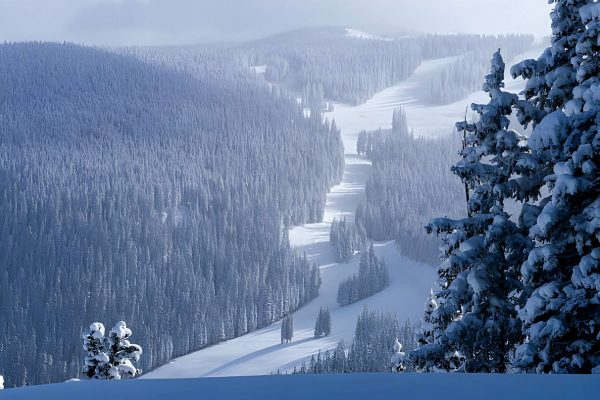
As one of the largest ski resorts Colorado and the most extensive in globally , Vail boasts abundant terrain to engage skiers of all skill levels. The town of Vail, with its upscale restaurants, shops, and luxury hotels, is complemented by long, meticulously groomed runs.
Enthusiastic skiers can explore the seven-back bowls, known for their challenging bumps and glades, maintained in optimal condition by an anticipated 350 inches of annual snowfall. Vail stands out not only for its vast size, encompassing over 5,289 acres of skiing serviced by 31 lifts but also for its diverse offerings. The presence of three distinct terrain parks caters to riders’ preferences, while backcountry skiers discover a powder haven in this expansive resort.
To manage crowds, Vail Resorts imposes daily ticket sales limits. Individuals without an EPIC pass are advised to make reservations in advance to secure their tickets.
3. Aspen Snowmass, Colorado, USA
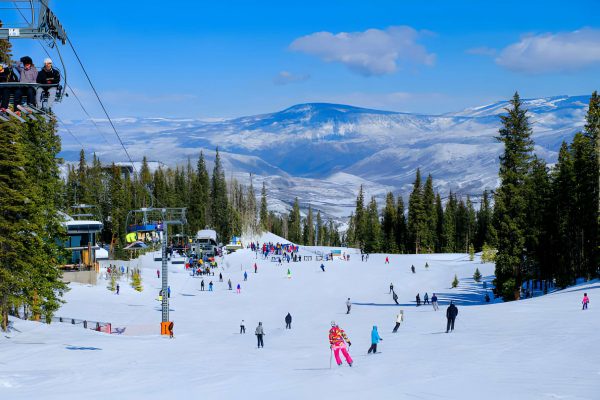
Standing out among Colorado’s various ski resorts, Aspen Snowmass comprises four ski areas surrounding Aspen and Snowmass Village. The combined expansive terrain of Snowmass, Aspen Mountain, Aspen Highlands, and Buttermilk exceeds 5,500 acres, with Snowmass alone contributing over 3,000 acres.
Despite being the smallest of the four, Buttermilk has gained recognition as the host of the Winter X Games since 2002. The upcoming 2024 games are slated for January 26-28, attracting nearly 100 leading skiers and winter sports stars to Aspen.
Aspen Mountain caters exclusively to intermediate and expert skiers, featuring steep terrain rated black or double-black across its three ridge lines. Notably, the Aztec run serves as the venue for the annual World Cup Women’s Downhill. Aspen Highlands, renowned for its expert runs, is also favored by backcountry skiers who venture into the high-alpine terrain of the Highland Bowl.
With its advanced and expert runs, Aspen Highlands recently completed the three-year glade project in the steep, wooded Lucky Find area. The presence of Hollywood and sports stars who own property in the area has contributed to Aspen’s reputation as a glamorous resort.
While much of the backcountry terrain is tailored for experienced skiers, Aspen stands out for providing some easy areas suitable for newcomers to ungroomed terrain. Serving as one of the first places on the continent where backcountry skiing gained popularity, Aspen maintains its leadership in the field. Aspen Powder Tours offers snowcat-guided trips into the powder stashes behind Aspen Mountain, beyond the reach of the lift system.
Read More: Best Things to Do in Aspen
Accommodation: Best Resorts in Aspen
4. Telluride, Colorado, USA
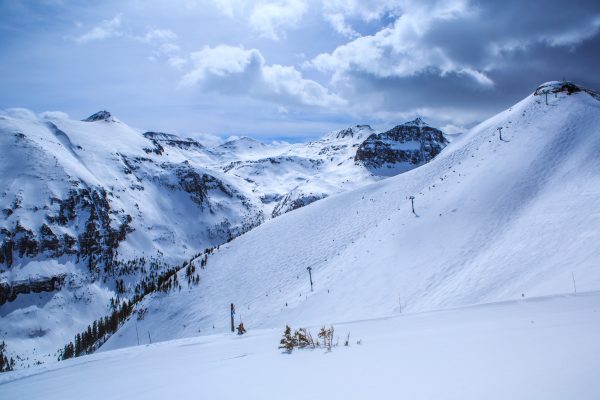
Nestled in a picturesque setting with ample challenging terrain and an elevation ensuring reliable snow conditions, Telluride stands as one of Colorado’s most sought-after ski resorts. The considerable height of the San Juan Mountains allows the resort’s base to commence at an impressive 8,725-foot elevation, with lifts transporting skiers to heights of 12,515 feet.
Encompassing over 2,000 acres of skiable terrain between the base and the lift summits, Telluride boasts an impressive vertical drop and extensive hike-to terrain, attracting extreme skiers to its slopes.
Beyond its appeal to advanced skiers, Telluride caters to families, offering skiing opportunities for all levels. The ski-in-ski-out Mountain Village at the base provides convenient access, linked to the town of Telluride by a complimentary gondola. Experienced skiers even have the option to descend the steep trails directly into Telluride.
Read More: Best Things to Do in Telluride
5. Jackson Hole Mountain Resort, Wyoming, USA
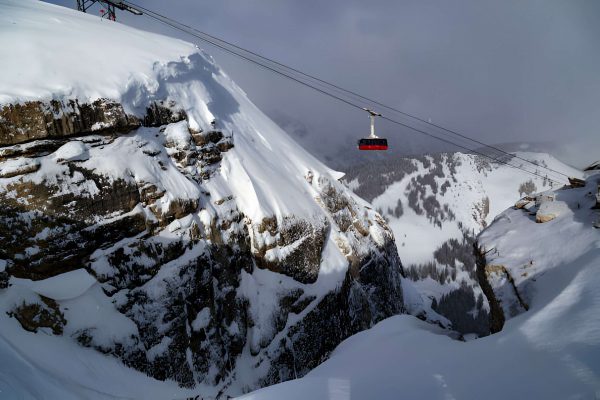
Benefiting from an annual snowfall averaging nearly 40 feet across 2,200 acres of terrain, Jackson Hole offers an abundance of skiing opportunities, primarily tailored to intermediate-to-expert skiers.
While there is limited beginner terrain, the resort provides lessons and ski camps suitable for children and beginners, as well as adults seeking to conquer the most challenging runs, such as the extreme double-black diamond Corbet’s Couloir. For those seeking more adventurous experiences, there is the option to join a backcountry guide for a day or enroll in a four-day Backcountry Camp to acquire skills in touring, avalanche awareness, and terrain selection.
In the past winter, Jackson Hole expanded its snowmaking capabilities, ensuring at least two trails with snowmaking from each lift, and added six acres to the glade terrain. On-site lodging is available, along with a mid-station featuring two restaurants. Jackson Hole is affiliated with the IKON and Mountain Collective pass programs.
6. Deer Valley, Utah, USA
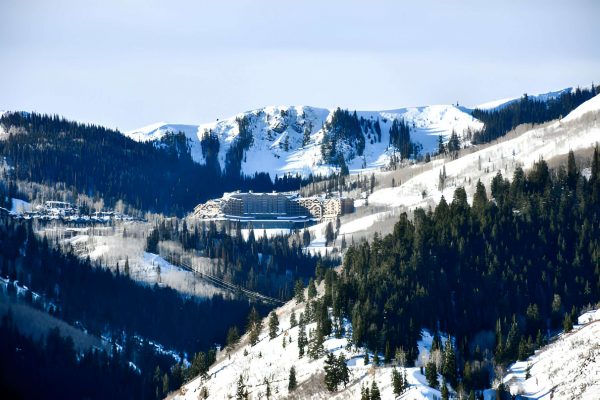
Deer Valley consistently secures the top spot or close to it in almost any readers’ poll of favorite North American ski resorts. The appeal lies in its flawless grooming, attentive mountain hosts, complimentary ski storage, assistance unloading skis from your car, impeccably maintained lodges with inviting fireplaces, slope-side fine dining, and a daily limit of 7,500 skiers (note that snowboards are not allowed), ensuring short lift lines and uncrowded trails.
The resort places a strong emphasis on customer service, reflected in the upmarket lodging and dining options in its picturesque base village. While the experience may come at a higher cost, the value for money at Deer Valley is evident.
Notably recognized for its exceptional intermediate skiing, Deer Valley ensures that experts can enjoy the 37 percent black diamond runs with the famous champagne powder left pristine. Take the Carpenter Express to explore the runs that hosted the 2002 Winter Olympic competitions: You Don’t Know for the slalom, Champion for the freestyle mogul, and White Owl, the venue for the freestyle aerial event.
For more challenging terrain on Bald Mountain, where black and double black runs abound, follow Ruins of Pompeii into Triangle Trees for a combination of steeps and glades. Mayflower offers double-black diamond chutes for extreme skiers, while Empire Bowl features double blacks, and Daly Bowl and Daly Chutes provide an even more demanding experience.
Situated approximately two miles from downtown Park City, Deer Valley Resort benefits from its proximity to other top ski resorts in Utah, including Park City Mountain/Canyons, Alta, Snowbird, and more.
7. Zermatt, Switzerland
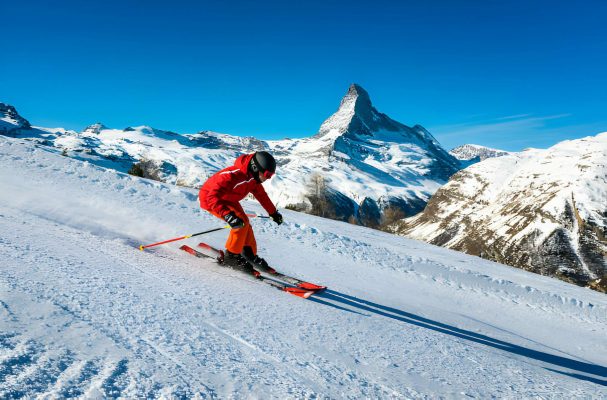
Even without the backdrop of one of the world’s most beautiful mountains, Zermatt, Switzerland’s ski resort, would be a destination that captures the imagination of skiers. It holds the distinction of being the highest winter sports area in the Alps, boasting the greatest vertical drop in Switzerland. Moreover, the iconic peak of the Matterhorn is visible from nearly every corner of its extensive 350-kilometer network of trails and slopes.
A recent addition is the world’s highest 3S Lift, inaugurated last year, transporting 2,000 skiers per hour to the Matterhorn Glacier at an altitude of 3,883 meters, allowing for year-round skiing. If that’s not enticing enough, consider the unique opportunity to ski over a mountain pass and descend into a trail system on the other side, crossing an international boundary in the process.
Given that the southern face of the Matterhorn lies in Italy, skiing over the Theodul Pass leads to the vast trail system of Breuil-Cervinia in Italy’s Val d’Aosta. Zermatt also boasts Europe’s longest downhill run, stretching over 25 kilometers from Matterhorn glacier (Klein Matterhorn) into Zermatt. The Zermatt Snow Park on the Theodul Glacier, one of the highest in the Alps, attracts snowboarders and freeride skiers.
Few places rival the off-piste opportunities offered by Zermatt. Alongside Rothhorn, Stockhorn, and the Matterhorn Glacier, Zermatt serves as the starting point for one of the world’s most exhilarating off-piste experiences: the 178-kilometer (111 miles) mountaineering route from Zermatt to Chamonix in the French Alps, known as the Haute Route.
Embarking on this journey requires a mandatory guide, along with expert skills and high-altitude stamina. The route connects a network of mountain huts, inns, and lodges and typically takes eight days to complete.
8. Kitzbühel, Austria

Nestled in the Austrian Alps, conveniently accessible from both Innsbruck and Salzburg, Kitzbühel embodies the picturesque charm of Alpine ski towns with its fresco-adorned buildings and mountain chalets. Despite its upscale boutiques and luxury hotels, which evoke the sophistication of Swiss resorts, Kitzbühel maintains a cozy warmth, offering accommodations that extend a warm welcome to budget-conscious families. Beyond its aesthetic appeal, Kitzbühel is more than just a visually captivating destination.
For avid skiers seeking exhilarating descents, the renowned 85 percent vertical awaits, where participants annually compete in the challenging Hahnenkamm downhill race, recognized as one of the most demanding in the world. Those with less advanced skiing skills can enjoy gentle slopes and extensive cruisers. The Bichlalm area is specifically tailored for riders and freestylers.
Should the 170 kilometers of skiable pistes and slopes in Kitzbühel prove insufficient, a short bus ride to SkiWelt opens up an additional 280 kilometers of trails? Both domains are encompassed within the nine areas covered by the Kitzbühel Alps AllStarCard.
Read More: Best Things to Do in Kitzbühel
9. St. Anton, Austria
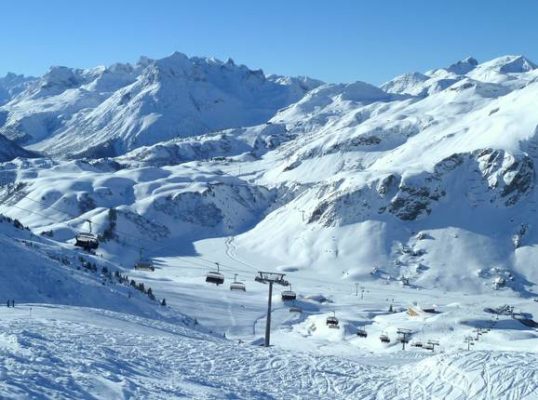
A renowned name dear to the hearts of skiing enthusiasts, St. Anton is the birthplace of the first ski club in the Alps, established in 1901. Its expansive 280-kilometer terrain, reaching heights of 2,800 meters, poses a formidable challenge and is unsuitable for beginners and most intermediates, featuring some of the most demanding runs found anywhere in the Alps.
The resort’s moguls are as legendary as its reputation, and the off-piste skiing experience is exceptional, benefitting from the abundant snowfall that characterizes one of the snowiest resorts in the Alps. For awe-inspiring adventures, hiring a guide to explore the breathtaking views around Sonnenkopf is highly recommended. Inquiries about the Schindler Chutes or the Waterfall route into Langen can enhance the skiing experience.
With the regional Arlberg lift pass, skiers gain access to 340 kilometers of slopes and pistes, encompassing nearby Austrian ski resorts such as Lech and Zürs. Both neighboring resorts offer ample opportunities for beginners and intermediate skiers. Shuttle buses connect these resorts, and some pistes are linked to St. Anton through the Flexenbahn, a cable car connecting to the other side of the Flexen Pass.
Adding to the excitement is the completion of the thrilling 85-kilometer Run of Fame. This circuit guides experienced skiers from St. Anton/Rendl through Zürs and Lech to Warth, ultimately returning to St. Anton. The circuit covers the entire Ski Arlberg skiing region.
The village of St. Anton exudes Alpine charm, featuring quaint inns, shops, and restaurants, with ski lifts conveniently departing directly from the village.
10. Chamonix, France
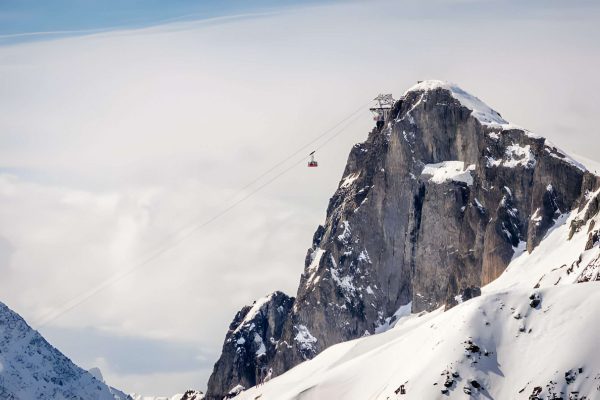
The renowned name of Mont Blanc, the inaugural Winter Olympics, and ski slopes with the world’s greatest height differential converge to establish Chamonix as one of the most recognized and beloved ski resorts in France.
As Europe’s loftiest peak at 4,807 meters, Mont Blanc guarantees Chamonix optimal snow conditions in the Alps, with a duration that surpasses many others. The altitude, coupled with the surrounding glaciers, ensures low temperatures and consistently dry powder. This abundance of snowfall blankets some of the most challenging terrain worldwide, catering to avid skiers.
Chamonix encompasses various areas, such as Grands Montets, spanning altitudes from 1,235 meters to 3,300 meters, providing expert runs with the most significant height differential globally. The Les Houches ski area features the renowned Verte, the sole piste in Haute-Savoie sanctioned for World Cup races. Lined with trees and occasionally glazed, its 3.5 kilometers boast an 870-meter vertical, including a series of jumps.
Chamonix is celebrated for its exceptional off-piste skiing. While expertise is emphasized, Les Houches offers skiing for all skill levels, along with cross-country trails.
Read More: Top Tourist Attractions in Chamonix-Mont-Blanc
11. Val d’Isere, France

Skiing icon Jean-Claude Killy catapulted his hometown into the limelight as one of the most renowned ski resorts in Europe following his awe-inspiring triumph of three gold medals at the 1968 Winter Olympics in Grenoble. Val d’Isere shares the elevated valley with its neighbor Tignes, creating a vast interconnected ski terrain spanning over 300 kilometers, serviced by more than 150 ski lifts.
Nestled in a valley surrounded by peaks that allow skiing at elevations as high as 3,450 meters, Val d’Isere is situated within the Parc National de la Vanoise. The elevated location ensures snow coverage well into late spring, with skiing on the Glacier du Pisaillas often extending through June and occasionally into July.
Val d’Isere and Tignes cater to expert skiers with an array of challenging black runs, numbering more than two dozen. However, it is the exceptional off-piste terrain that truly distinguishes these resorts and earns acclaim from seasoned skiers.
Off-piste skiing in Tignes predominantly unfolds above the tree line. For exhilarating 45-degree descents and remarkable scenery, venture to the North Face of Pramecou; securing the services of a guide is highly recommended, even for adept alpine skiers.
12. Courchevel, France
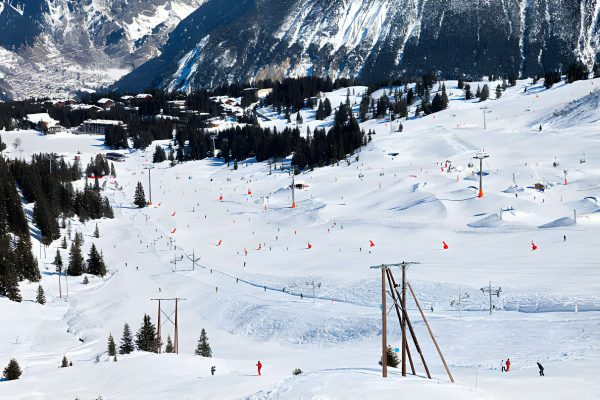
Despite its overtly luxurious villages and prestigious reputation, Courchevel caters to ardent skiers seeking the ultimate snow thrills. As part of the Les 3 Vallées region, the largest Alpine ski domain globally, featuring 600 kilometers of interconnected ski runs across 10 summits exceeding 2,500 meters (8,200 feet), Courchevel boasts 150 kilometers of Alpine ski terrain accessible via 60 lifts.
The annual average of four meters of natural snow undergoes meticulous maintenance and grooming, while off-piste skiing achieves legendary status. The repertoire of black runs includes a corridor (couloir) recognized as one of the most challenging in the world, along with an array of steep black mogul runs.
For an exhilarating experience in tight tree skiing, navigate the Jockeys and Jean Blanc pistes, stretching from the top of Col de la Loze to Le Praz. Jean Blanc, a former World Cup downhill runner, adds to the thrill. Concluding the day, numerous restaurants dot the landscape in any of the five villages, seven of which boast Michelin stars. However, this season may not witness the usual vibrant après-ski scene that has traditionally defined Courchevel as one of the most popular ski resorts in France.
13. Cortina D’Ampezzo, Italy
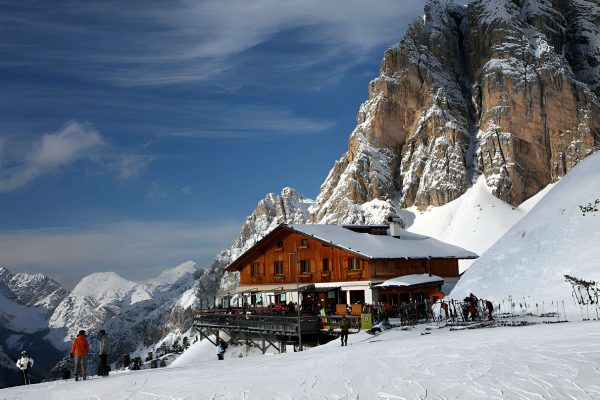
The breathtaking setting of the Cinque Torri, with its five rugged peaks, bestows upon upscale Cortina D’Ampezzo the most scenic backdrop among all of Italy’s ski resorts. Initially recognized only by avid skiers, Cortina rose to prominence after hosting the 1956 Winter Olympics, captivating the well-heeled winter enthusiasts.
While the town maintains its high-end ambiance, skiing in Cortina is surprisingly economical, largely owing to the value packed Dolomiti Superski Pass. This pass provides access to lifts and trails across a dozen resorts, most interconnected to offer nearly 400 kilometers of skiing. Encompassed within this pass are several ski towns nestled between the peaks of the Gruppo del Sella and the Marmolada Glacier, constituting a UNESCO World Heritage Site.
In Cortina alone, over three dozen lifts transport skiers from the town center to snowfields atop the highest ridges, facilitating exhilarating descents back into town or extended days on high-altitude snowfields.
Skiing in Cortina ranks among the best things to do in Italy. Catering not only to experts, but approximately half of Cortina’s terrain is also suitable for intermediate skiers. Additionally, visitors can enjoy a bobsled run and an Olympic rink for ice skating.
Introduced in 2022, the 10-person Son dei Prade-Cianzopè-Bai de Dones gondola connects the Tofana and Cinque Torri areas, streamlining access for skiers from Cortina to the Sellaronda and Dolomiti Superski region without removing their skis.
14. Courmayeur, Italy
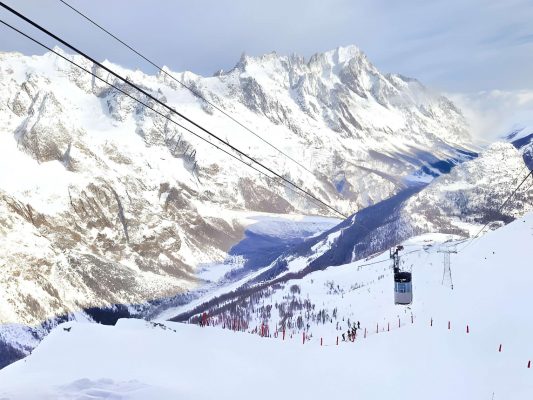
Among the most exclusive ski resorts in Europe, Courmayeur attracts a weekend influx of affluent skiers and revelers from Milan and Turin. This does not compromise the ski experience, although it does contribute to a higher cost for a ski vacation compared to the Dolomite ski resorts situated farther east in Italy.
There is an undeniable allure to skiing on the upper slopes of the Alps’ highest peak. The altitude ensures reliable snow conditions, and although not among the largest European ski resorts, Courmayeur boasts a skiable vertical of 1,545 meters (5,068 feet) and a diverse range of terrain. Skiers can enjoy high-altitude, off-piste tree skiing on the north-facing slopes, along with exceptional powder conditions.
Courmayeur caters primarily to expert and high-intermediate skiers, as it offers limited beginner terrain. A cable car conveniently starts right in the village, providing access to the higher lifts.
15. St. Moritz, Switzerland
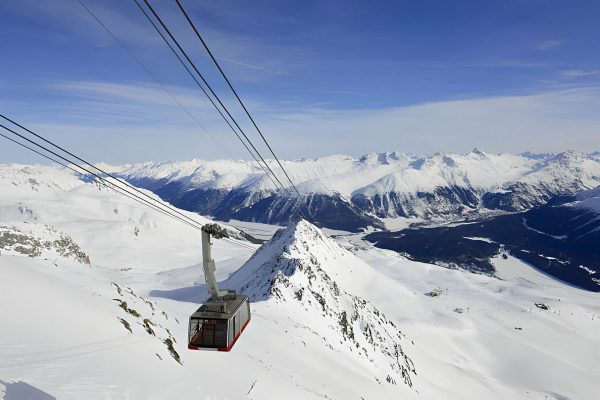
Boasting the title of Europe’s inaugural winter resort and maintaining its status as one of the most luxurious, St. Moritz possesses numerous credentials that set it apart from Switzerland’s many ski resorts.. While renowned for its opulence and social scene, there is no denying the formidable skiing opportunities offered by its surrounding mountains. The town has hosted two Winter Olympics and five Alpine World Ski Championships, with the most recent taking place in 2017.
St. Moritz excels in intermediate terrain, with approximately 30 percent of its slopes designated as black, complemented by ample off-piste options, some backcountry routes, and marked itineraries. Its lesser-known reputation for off-piste skiing has kept it a well-guarded secret, ensuring that the backcountry runs receive less traffic and remain less tracked than those of more widely recognized destinations.
For those seeking the steepest and most challenging terrain, Diavolezza and Lagalp are recommended, where a substantial base ensures excellent snow conditions.
Read More: Best Things to Do in St. Moritz
16. Verbier, Switzerland
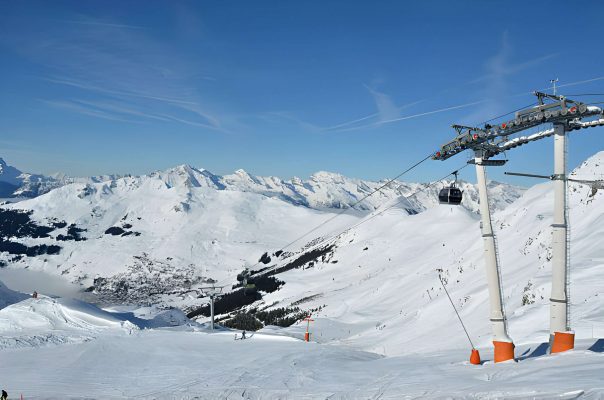
Situated within the expansive Four Valleys ski domain, offering access to over 410 kilometers of ski runs on a single pass, Verbier seamlessly blends one of Europe’s steepest descents with some of the globe’s premier backcountry terrain for off-piste skiing. The Mont-Gelé cable car, an impressive engineering feat that spans the mountain with a continuous cable, provides access to the finest off-piste areas and the powder fields of the Mont-Gelé glacier.
A haven for free-riders, Verbier boasts awe-inspiring chutes and vertical drops, serving as the venue for the annual Verbier Ride freestyle event and the Verbier Xtreme freeride competitions, integral parts of the Freeride World Tour.
Expert skiers appreciate the well-designed runs for extensive long-distance skiing, while intermediate skiers discover favorable terrain with fewer crowds on the slopes at Savoleyres. Across the valley, the cable car to the 2,050-meter Tortin, renowned for its record-breaking steep descent, also provides access to several runs suitable for high-intermediate skiers.
Augmenting the 93 lifts of the Four Valleys, which encompasses the resorts of Thyon, Veysonnaz, and Nendaz, is the newly introduced 10-person Médran 1 gondola at Verbier, boosting capacity to 3,200 passengers per hour.
17. Niseko, Japan
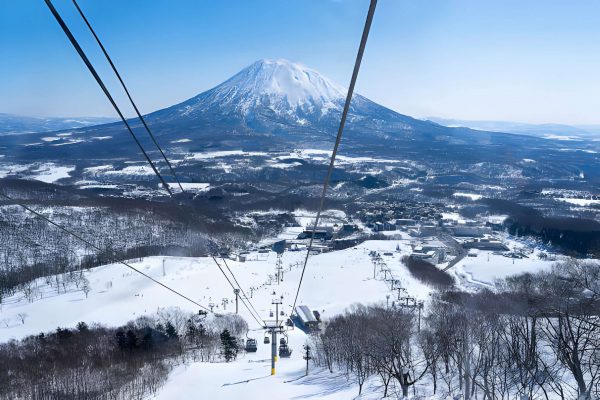
Located approximately 90 kilometers from Sapporo on Japan’s northern island of Hokkaido, Niseko United comprises four interconnected ski resorts: Niseko Village, Grand Hirafu, Hanazono, and An’nupuri. Together, they offer diverse and exceptional terrain on the slopes of a volcano, with many trails affording views of the near-perfect cone of Mt. Yotei, often referred to as “Hokkaido’s Mt Fuji.”
The mountain features groomed trails, wooded glades, ungroomed powder bowls, and snow parks on one side, while the other side presents a vast mountainside of unpatrolled backcountry adventures, boasting natural halfpipes, steep chutes, and extensive tree skiing. Renowned for its powder and the low temperatures that contribute to it, Niseko is a destination where visitors should be prepared for cold weather.
While Niseko is celebrated for its glades and off-piste alpine skiing, it designates over two-thirds of its trails for beginners and intermediate skiers. The resort also offers a range of activities, including heli-skiing, cat skiing, snowmobiling, snowshoeing, and hot spring spas—a highlight of any trip to Japan.
Niseko’s commitment to family-friendly offerings, diverse activities for children, and a top-notch program of ski and snowboard lessons (available in English) have earned it the distinction of being recognized as Japan’s Best Family Ski Resort in the Ski Asia Awards.
Closer to the central hub of Sapporo, the smaller Kiroro Resort boasts an impressive snowfall of 21 meters per season, making it claim the title of the ski resort with the highest snowfall in the world.
18. Valle Nevado, Chile
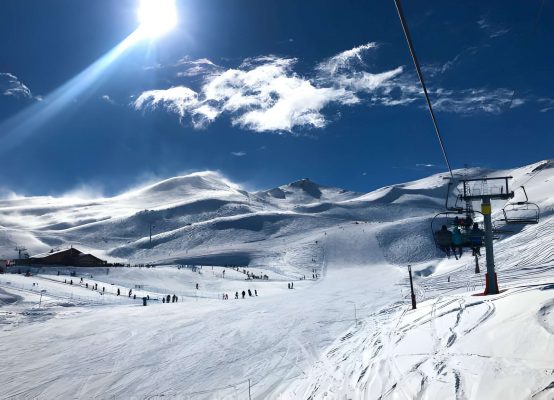
Situated in the Chilean Andes, less than 40 miles from Santiago, Valle Nevado is a component of the “Tres Valles” resorts, adjoining El Colorado and La Parva, featuring interconnected lifts and trails. The resort’s expansive 2,200 acres of skiable terrain is serviced by 14 lifts, but what attracts elite international skiers is the vast open terrain and the premier heli-skiing experiences offered in the Andes.
With an elevation of 10,000 feet, a southern exposure, and comprehensive snowmaking coverage, Valle Nevado ensures some of the most dependable snow conditions in the Andes. The mountain provides spectacular views from virtually any location, and a significant portion of the challenging backcountry terrain is accessible by lifts.
The infrastructure at Valle Nevado is well-suited to both the skiing experience and the picturesque surroundings, featuring multiple hotels, restaurants, condos, and a spa right at the base. Plans for the resort include the development of the base into a comprehensive Alpine-style village.
Read More: Top Tourist Attractions in Chile
19. Treble Cone, New Zealand
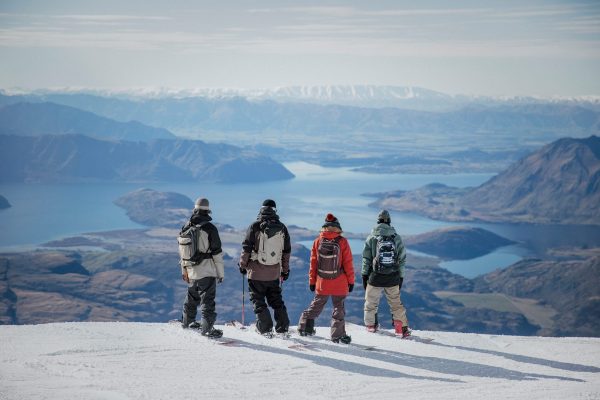
Situated approximately 90 minutes from Queenstown and just half an hour from Wanaka Airport, Treble Cone boasts the largest ski area on the South Island, covering 1,359 acres. Geared towards advanced and intermediate skiers, 45 percent of the trails are designated for each skill level, and the resort offers ample natural freeride terrain. While options for beginners are more limited, novice skiers can utilize the Magic Carpet free and the Platter at a discounted rate.
With its steep mountainside terrain, Treble Cone receives New Zealand’s highest annual snowfall, providing stunning panoramic views across Lake Wanaka and the surrounding mountainsides. Although the runs are relatively shorter (the longest being four kilometers) compared to Alpine or Rocky Mountain resorts, the absence of crowds and the presence of a six-person express lift ensure a significant amount of time spent on the snow.
FAQs
Q: What makes Verbier in Switzerland a top ski resort?
A: Verbier is renowned for its challenging slopes, stunning Alpine scenery, and vibrant apres-ski scene, making it a favorite among skiing enthusiasts.
Q: Why is Aspen in the USA considering a luxurious skiing destination?
A: Aspen is synonymous with luxury, offering high-end accommodations, upscale dining, and a sophisticated atmosphere, attracting discerning travelers.
Q: What sets Niseko in Japan apart as a hidden gem?
A: Niseko is celebrated for its abundant powder snow, providing an unparalleled skiing experience, coupled with a unique blend of Japanese culture and hospitality.
Q: How are ski resorts incorporating technology for a better experience?
A: Ski resorts are embracing technology through advanced lift systems, mobile apps for real-time updates, and smart equipment rentals, enhancing the overall visitor experience.
Q: What sustainability practices are ski resorts adopting for environmental conservation?
A: Ski resorts are increasingly adopting eco-friendly measures such as waste reduction, energy-efficient infrastructure, and initiatives to preserve the delicate mountain ecosystems.

